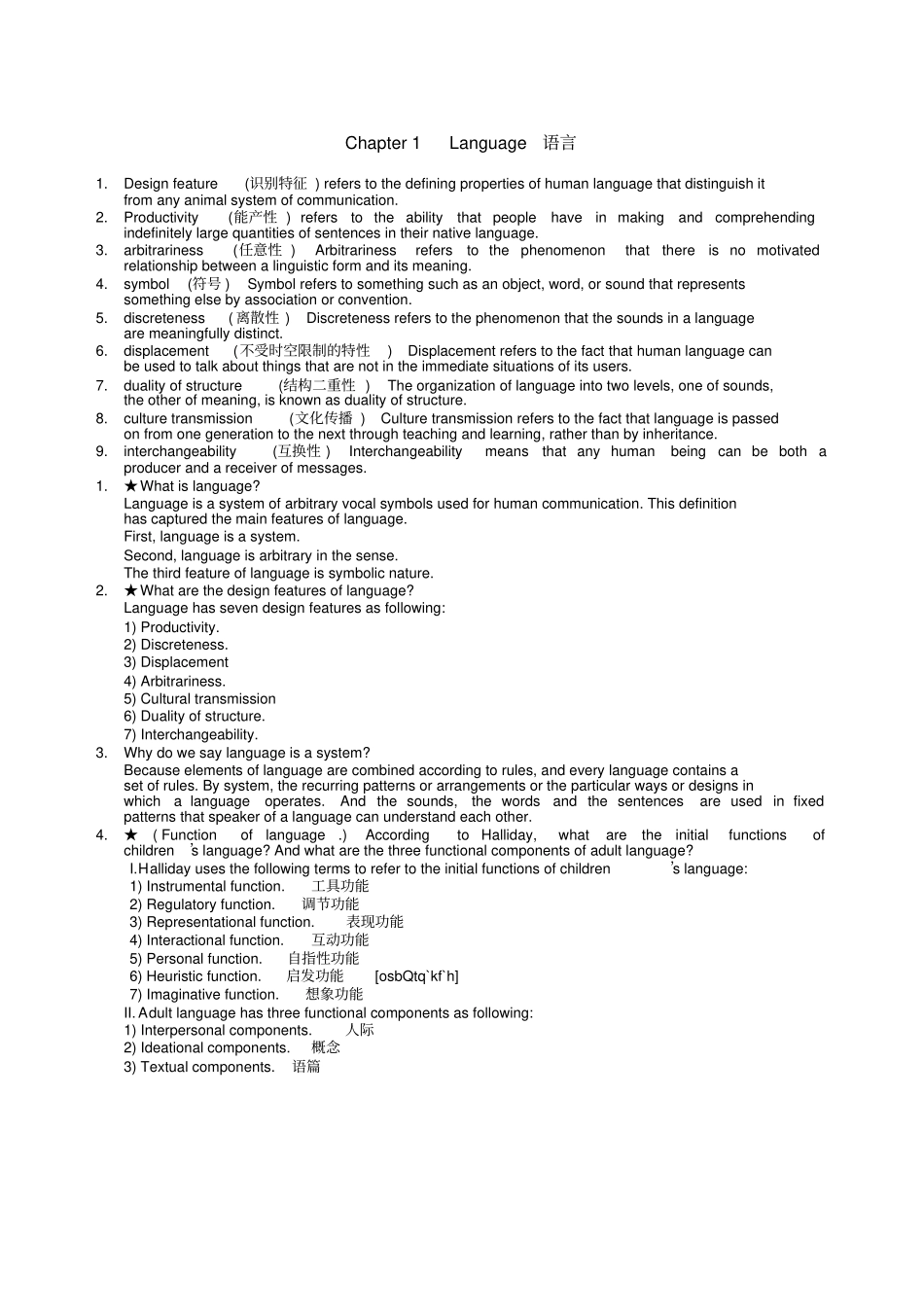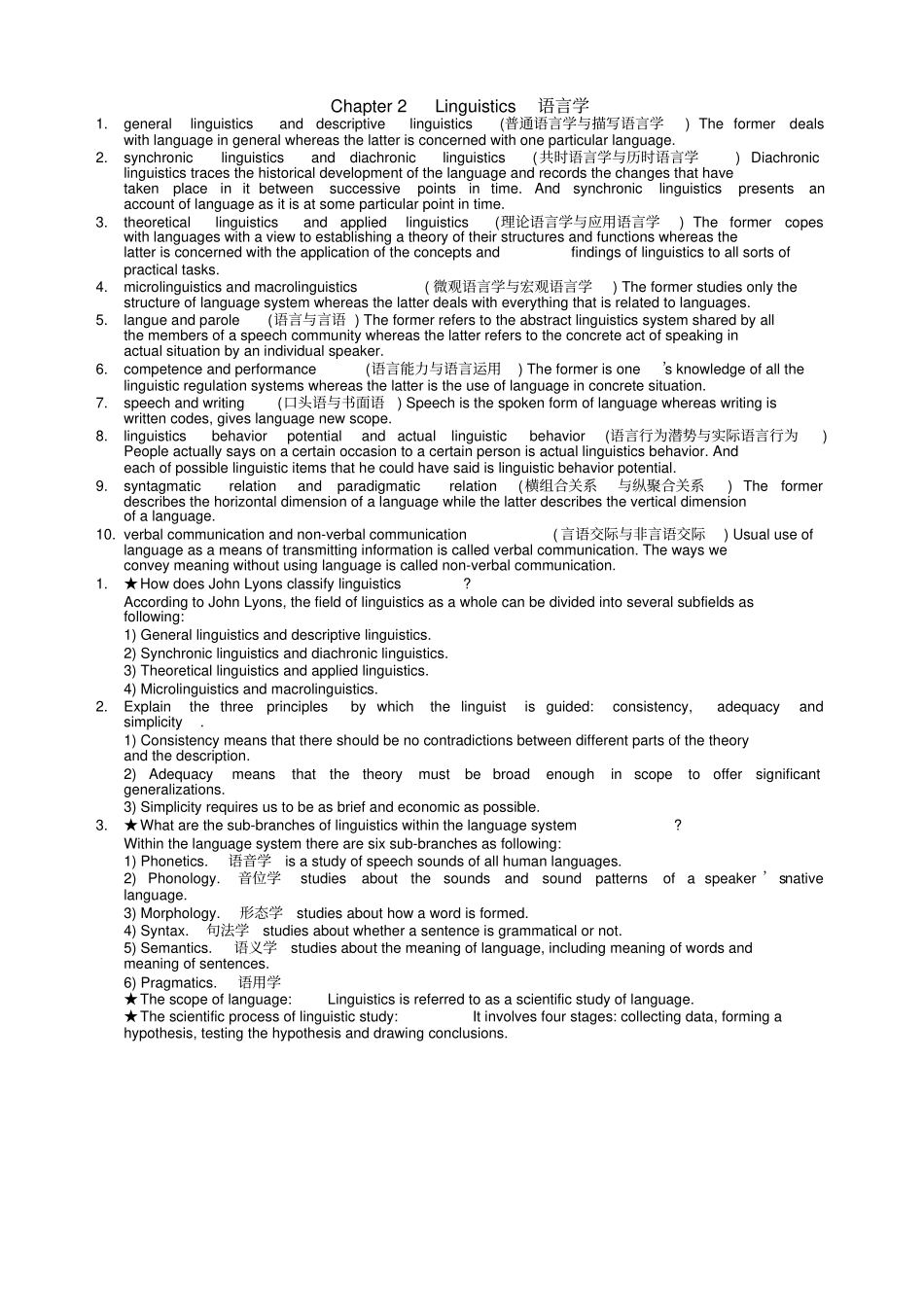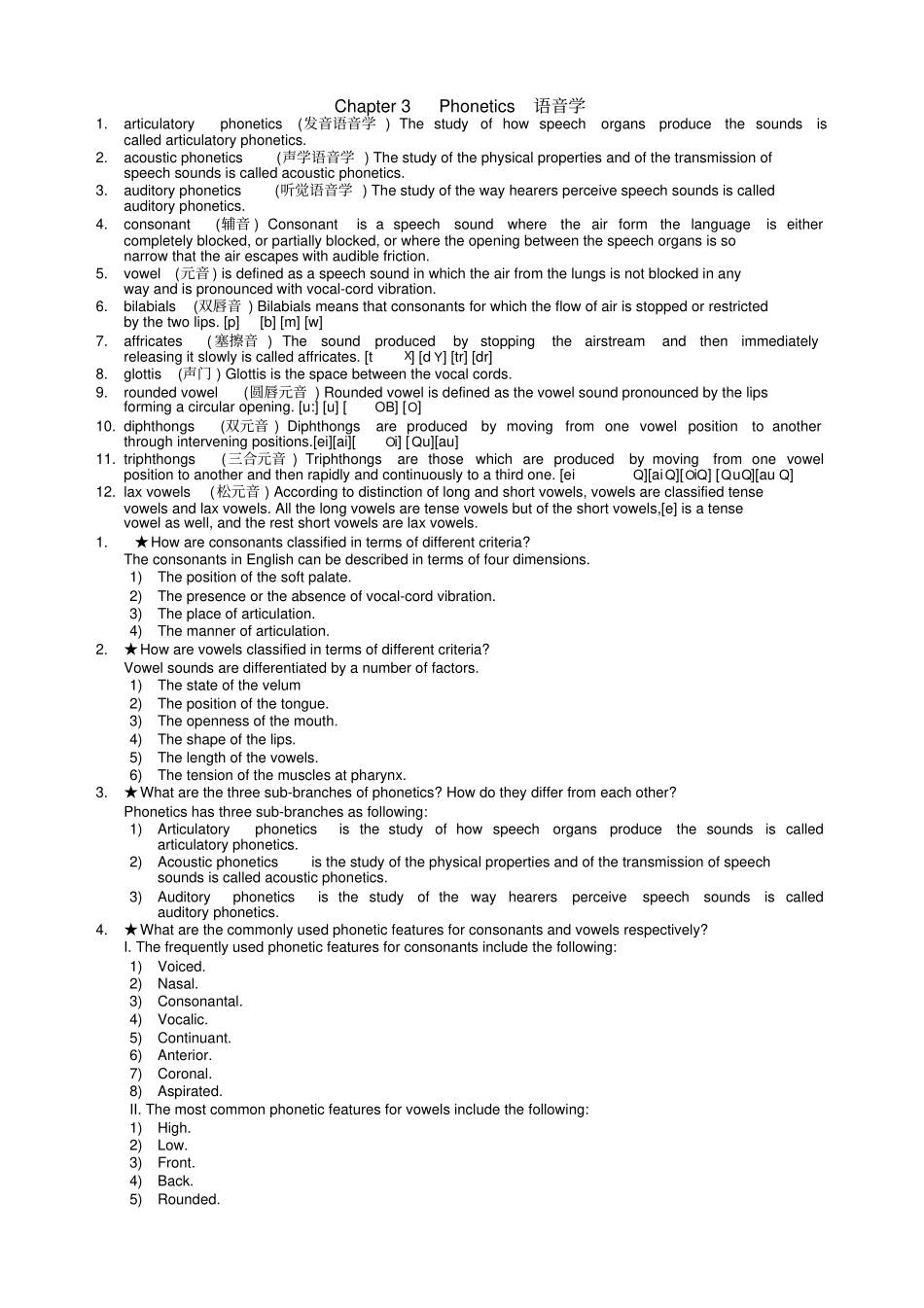Chapter 1 Language语言1. Design feature (识别特征 ) refers to the defining properties of human language that distinguish it from any animal system of communication. 2. Productivity(能产性 ) refers to the ability that people have in making and comprehending indefinitely large quantities of sentences in their native language. 3. arbitrariness (任意性 ) Arbitrariness refers to the phenomenon that there is no motivated relationship between a linguistic form and its meaning. 4. symbol (符号 ) Symbol refers to something such as an object, word, or sound that represents something else by association or convention. 5. discreteness ( 离散性 ) Discreteness refers to the phenomenon that the sounds in a language are meaningfully distinct. 6. displacement (不受时空限制的特性) Displacement refers to the fact that human language can be used to talk about things that are not in the immediate situations of its users. 7. duality of structure (结构二重性 ) The organization of language into two levels, one of sounds, the other of meaning, is known as duality of structure. 8. culture transmission (文化传播 ) Culture transmission refers to the fact that language is passed on from one generation to the next through teaching and learning, rather than by inheritance. 9. interchangeability(互换性 ) Interchangeability means that any human being can be both a producer and a receiver of messages. 1. ★What is language? Language is a system of arbitrary vocal symbols used for human communication. This definition has captured the main features of language. First, language is a system. Second, language is arbitrary in the sense. The third feature of language is symbolic nature. 2. ★What are the design features of language? Language...


